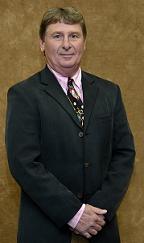 Robert Dugan, MD, is a board-certified orthopedic surgeon at Illinois Bone and Joint Institute in Gurnee. He has an interest in sports medicine, trauma, adult reconstruction and pediatric orthopedics. He is one of the team physicians for the Chicago Wolves professional hockey team, In addition, he serves as a faculty member of the University of Illinois at Chicago in the division of specialized care for children, as well as team physician for several local high school teams. He also serves as the director of Lake County Children's Orthopaedic Clinic. He remains active with the Boys and Girls Club of Lake County.
Robert Dugan, MD, is a board-certified orthopedic surgeon at Illinois Bone and Joint Institute in Gurnee. He has an interest in sports medicine, trauma, adult reconstruction and pediatric orthopedics. He is one of the team physicians for the Chicago Wolves professional hockey team, In addition, he serves as a faculty member of the University of Illinois at Chicago in the division of specialized care for children, as well as team physician for several local high school teams. He also serves as the director of Lake County Children's Orthopaedic Clinic. He remains active with the Boys and Girls Club of Lake County.
Here he discusses how electronic health records have helped streamline patient care, the growing importance of coordinated care and how pediatric sports medicine has changed over the years.
Q: Why did you choose to focus on sports medicine?
Dr. Robert Dugan: I was an athlete in collage. I competed in golf and was on the gymnastics team at the University of Illinois. The focus in sports medicine is orthopedics. Weekend warriors and other casual participants injure themselves just like professional athletes.
Q: How has the onset of EHR implementation affected the way orthopedic surgeons and sports medicine physicians practice?
RD: From a services point of view, we have integrated physical therapy within our office, so some of the student athletes we treat are rehabilitated here as well. Since our therapists are on the same EMR, we share data. So, I have immediate access to progress notes and updates on my patients. I have this electronically, remotely or I can walk next door and speak with the therapists. It's always a timely exchange of up to the moment data, so it's incredibly helpful.
Q: How important has the issue of coordinated care become in sports medicine?
RD: Coordinated care has reached the school systems, and in Illinois every high school has a certified athletic trainer available throughout the student athletes' career there. That benefits the students, and in the case of injury, trainers' initial evaluation and quick referral to the orthopedist has helped expedite care. Following treatment, if the athletes need rehabilitation, the trainers have the ability to work with these kids before, during and after school.
Q: How has pediatric sports medicine changed since you first began to practice?
RD: Changes in pediatric sports medicine involve more aggressively treated major knee ligament surgery, increased numbers of "over use" injuries, and most recently, head trauma/concussions in the contact sports.
Major knee ligament injuries have increased in numbers due to faster playing surfaces, longer seasons and increased female participation. The synthetic turf fields are increasingly popular due to their consistent playing condition with all scheduled events and relative savings in maintenance. Better traction leads to increased stresses on the musculoskeletal system. Earlier attempts at reconstruction in actively growing adolescents avoided anatomic reconstruction to avoid violating the growth plates. These extra articular techniques were helpful, but not ideal. Advanced research and improved techniques permit anatomic reconstruction while minimizing potential to the physeal plate.
The overuse injuries have become more prevalent as a consequence of the yearlong commitments required of the student athlete. Many sports are now 12 month commitments without much down time. More aggressive training techniques and performance enhancing supplements have made the student athletes bigger, faster and stronger. Injury risks have risen proportionately.
Probably the greatest change in pediatric sports medicine involves the increased awareness of concussions in contact sports. Concussions have been under reported historically. The medical legal pressures on the team physician to determine eligibility to compete have been brought to light by the media. Diagnosing head trauma requires a cooperative athlete that honestly responds to evaluation on the sidelines. Pressures placed on the athlete by the coaches, teammates and family members can influence mental status evaluations and potentially lead to lasting neurologic consequences. We are challenged to protect the athlete despite the impact on wins and losses.
Q: What advice do you have for orthopedic surgeons considering a focus on sports medicine?
RD: If you are going to pursue a fellowship in sports medicine, you need to be affiliated with a group that is highly compartmentalized so you get all soft tissue injuries. If not, you need to be prepared to do strong, fundamental orthopedics to make a living. In a highly competitive market there are many physicians that see sports medicine injuries and they do good work, whether or not they position themselves as sports medicine specialists. Arthroscopic techniques are important in sports medicine, but in occupational medicine as well.
There is now fellowship training for family practice physicians to become sports medicine specialists. They are not surgeons, but becoming team physicians could expand the presence of the orthopedist, who might cover a second game.
More Articles on Sports Medicine:
8 Ways Orthopedic Surgery Hospital Departments Can Stand Out
How Many Orthopedic Surgeons Are in Private Practice?
5 of the Biggest Issues in Sports Medicine


